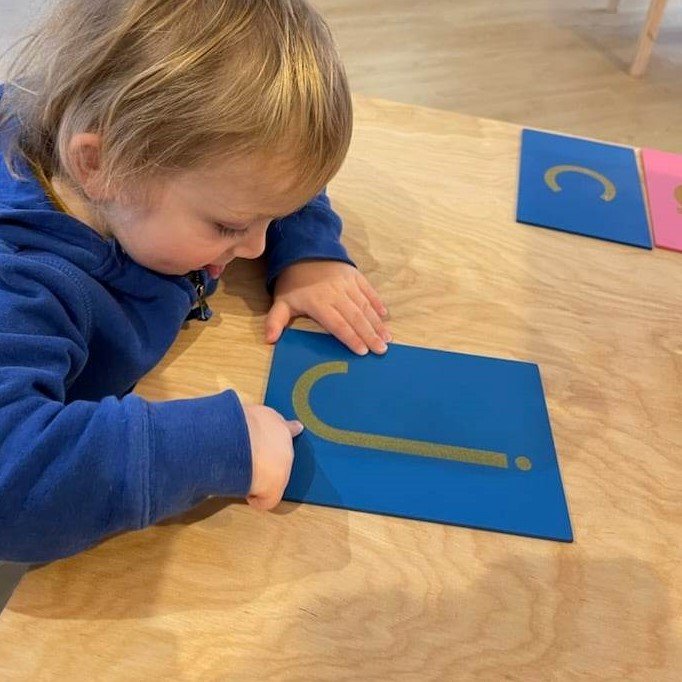Introducing Language
Children are in a sensitive period for language during the first 6 years of life and are able to absorb language despite its complexities. This is a time of construction where children are not only endeavoring to create language but they are still developing the organs used to produce it. During this formative period the child is exploring through sensory and motor activity and this helps develop the neurological structures that are needed. Language calls out to them and Montessori Guides strive to provide an environment that is rich in language impressions and embody its precise use.
“These impressions not only penetrate the mind of the child, but they form it; they become incarnated, for the child makes his own ‘mental muscles’ using the things that are in his environment.”
Maria Montessori, The Absorbent Mind
If the environment is not rich in diverse language, the child will have fewer opportunities to fulfill the potential of their sensitive period and natural drives for the acquisition of language. Helping enrich a child’s vocabulary can help them adapt to their classroom environment and there is a great power and gravity that comes with naming objects. Everything in the classroom has a precise name and we do our best to use this common language instead of saying whatchamacallit, doohickey, thingamabobber, gadget, or doodad.
Three Period Lesson
The primary tool we use for introducing language is through a “Three Period Lesson”. This lesson allows children to have hands on, concrete experiences with an object and playful interaction with the Guide before being invited to identify the object by its name.
Three Period Lessons, as the name suggests, has three parts:
Naming and being allowed to feel an object (up to three objects).
The adult giving lively, fun, interactive commands to the child (give me ___, put ___ on your head, trace ___, point to ___, put ___ behind your back , show me ___, pick up ___, etc.).
Once the child is showing signs of being able to identify each object you may ask them to name it.
Knowing the names of the real life tools that children will be invited to use for purposeful work will help them orient and feel comfortable in the physical space. For example, by introducing the language of a zipper, we can be the support or scaffolding to the child by giving them encouraging verbal prompts without having to take over the activity and zip up their jacket for them.
We also use this lesson with our Sandpaper Letters, Geometric shapes, areas of the room, Sandpaper Numbers, Language cards, part of objects, and more. Three Period Lessons are fun exercises that bring language and child’s surroundings to life!

